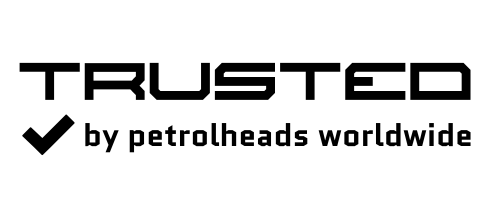Explained: Pirelli F1 Tyre Compounds

Tyre Compounds explained
F1 tyres are very different to any you would see on road cars, mainly due to the massive amounts of forces they have to withstand. In this article we take a look at the tyre compounds used by F1 cars.
The new 2022 tyres
In 2022, F1 made some changes to the tyres. The rims have been made bigger, going from 13-inch tyres to 18-inch tyres. This meant that the tyre sidewall is much shorter now, It is a big aesthetic change however extremely challenging technically but Pirelli were happy to make the change.
F1’s partnership with Pirelli
Over the history of Formula One, there have been many different F1 tyre manufacturers including Bridgestone, Michelin and Goodyear. Pirelli have been one of the mainstay manufacturers, giving the championship tyres in F1’s very first season.
They were part of F1 from 1950-1958, before returning to the sport in 1981. Pirelli then had another 20 year break from Formula 1 after 1991. However, after Bridgestone decided against renewing its contract to supply F1 tyres in 2010, Pirelli took over as the exclusive tyre supplier for F1 in 2011, a contract which was extended in 2022 to run until at least 2024.
Since returning to F1, Pirelli has put over a Billion dollars into their tyre programme, with an annual budget of around $110m which is around the same as quite a few of the F1 teams. It’s not too surprising when you think about it. Just looking at the 2021 season, Pirelli has to produce around 38,000 tyres just for F1 cars in a single season, and that is not including testing
It is a huge job that requires huge investment. It is estimated that every set of tyres costs around $2700, which is why Pirelli require such a large budget for their tyre manufacturing. But Pirelli is committed to producing the highest quality tyres for Formula One and maintaining the partnership.
Pirelli produces seven different tyre compounds for Formula One, five dry tyres, one intermediate tyre and one wet tyre.
The C tyres in F1
When anyone in Formula One talks about the different tyre compounds, it may be confusing but it is actually pretty simple. The C1-C5 range are five different tyre compounds that are in order of durability and how quickly they degrade. The C1 is the hardest and takes the longest to degrade, while the C5 is the softest and degrades quickest. It is also worth noting that the softer the compound is the more grip it provides, this means that drivers can push harder, break later and corner faster resulting in a quicker lap times.
Formula One will choose three tyre compounds to take to any race weekend depending on how much energy the circuits take out of the cars. If they are high downforce circuits that degrade the tyres quickly, then Formula One will choose to take the C1,C2 and C3 tyres. In this case, the C3 will be the soft tyre as it is the softest and the C1 will be the hard tyre.
If you are at a circuit that does not degrade the tyres quickly like Austria, then F1 would take the C3,C4 and C5. In Austria, the C3 would be the hard tyre, the C4 would be the medium and the C5 would be the soft tyre.
Formula One will assess which tyre is best for each circuit as different circuits do different things to the tyres. So it means that the C3 could be the hard tyre at one race and then the next week be the soft tyre. The idea is that three tyre compounds will not survive every track as Formula One has a lot of different tracks that ask different things of the tyres.
Pirelli’s tyre options when its wet
The C1-C5 range are all designed for dry conditions, so the manufacturer needs to provide some tyres for the wet conditions. Pirelli provides an intermediate tyre and a full wet tyre.
The intermediate tyre is designed for either light rain or after these has been rain, whereas the full wet tyres are designed for rain and they are designed to deal with standing water.























































































































































































